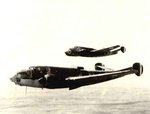carpenoctem1689
Airman 1st Class
- 285
- Sep 10, 2005
The french were never known for there great fighter aircraft, or bombers, or really anything in aviation around the outbreak of the war, and didnt have time to really prove themselves. The Arsenal VG-33 is a good example if what the french COULD do, in terms of fighters. The VG-33 managed to get a very impressive top speed of 347mph out of a 860 Hp engine, the Hispano-Suiza 12Y13, 12-cylinder V, liquid cooled engine. It was pretty well armed, with a hub mounted 20mm cannon, and four 7.5mm Darne machine guns. It had a range of 745 miles, and a cieling of a little over 36,000ft. It is then hard to believe you had fighters like the M.S406, with the same Hp, ungainly appearance, one 20mm, and two machine guns, and only 302mph. The range was alose only 497 miles, and a cieling of only a little over 30,000ft. The D.520 was a decent aircraft, sporting a Hispano-Suiza 12Y 45, 12-cylinder engine of 935hp. It had the same armament of the VG-33, slightly less speed at 332mph, and less range at 552miles, but still decent/. The block MB-152, with two 20mm cannon and two machine guns and a top speed of 320mph, and a cieling a little over 32,000ft. range was a pitiful 384 miles. The aircraft wasnt anything special, and almost looked italian. The VG-33 was obviously a good aircraft, but like the best french aircraft, wasnt available in suffecient numbers.
What are your thoughts on french fighters, and aircraft in general*
What are your thoughts on french fighters, and aircraft in general*

